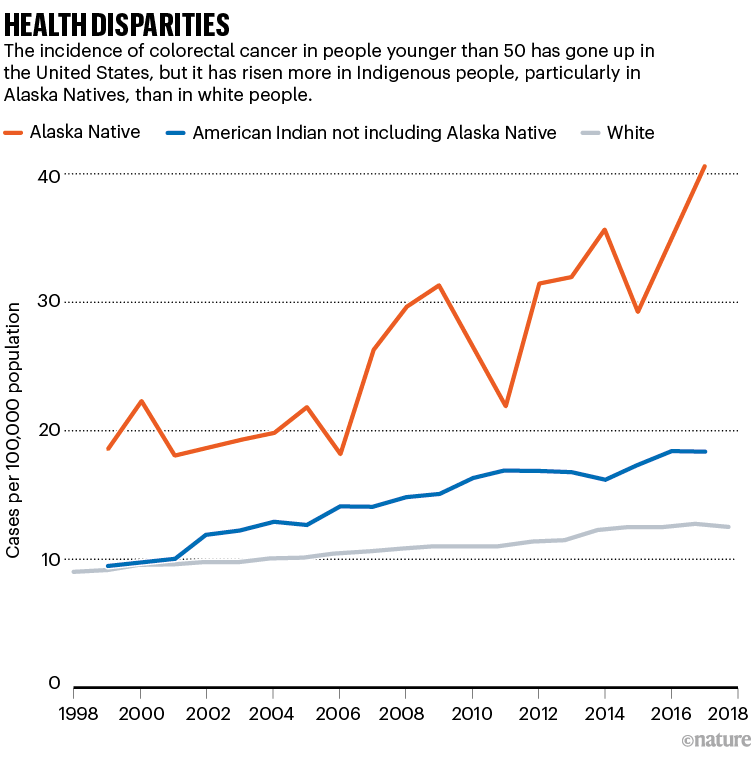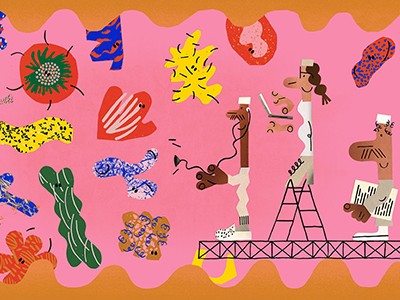[ad_1]
CHARLOTTE, Carolina del Norte – Práctica temprana el lunes, Bryce joven Pase perfecto por encima del hombro del lateral Claudine Cherilus Eso golpeó al ala cerrada Ian Tomás Con calma, el tipo de gran jugada en el campo que no existía en panteras de carolina Crimen la última temporada.
Pero algunos de los momentos más cruciales durante la primera sesión de OTA ocurrieron antes del centro, cuando el entrenador de primer año, Dave Canales, ocasionalmente interrumpía el ritmo de Young para anotar un punto para el mariscal de campo de segundo año.
Es demasiado pronto para hacer algún tipo de generalización radical sobre la química entre Young y Canales, cuyo éxito transformó las carreras de los dos mariscales de campo a finales de mayo. Gino Smith Baker Mayfield en temporadas consecutivas lo ayudó a conseguir el puesto de los Panthers. Pero los dos parecen llevarse bien.

Ve más profundo
Calendario de los Carolina Panthers 2024: No hay fechas de horario estelar para Dave Canales en el primer año
Young elogió a Canales, de 43 años, por su presencia tranquila y sus habilidades de comunicación.
“Es alguien que tiene una conversación contigo y te habla. Ya sea bueno, malo o indiferente, se nota que hay un énfasis en la enseñanza”, dijo Young. “A veces (en el fútbol), por supuesto que nos emocionamos y hay una emoción”. muchos gritos y muchos sentimientos. No hay nada de malo en ello. Pero su estilo es que quiere enseñar. “Quiere asegurarse de comunicarse”.
Después de que los Panthers seleccionaron a Young en primer lugar la temporada pasada, el cuerpo técnico y la directiva liderados por Frank Reich acordaron no profundizar demasiado en la mecánica de Young, creyendo que ya tenía suficiente para aprender a aprender las habilidades de Young. NFL un crimen. Más adelante en la temporada Los entrenadores ofensivos comenzaron a trabajar con Young en sus puestos de corredor. Después de que algunos miembros de la organización creyeran que estaban contribuyendo a los problemas de protección del tráfico.
Pero a Young le gusta que Canales sea un entrenador orientado a los detalles y que le dé cosas específicas para practicar.
“No se trata simplemente de decir: 'Oh, ese fue un mal lanzamiento' o 'fallé'. Es constructivo”, agregó Young. “Si fallas en algo o haces algo mal, obtendrás algo tangible: organicemos nuestra base”. Sea lo que sea, es algo en lo que puedes pensar y aplicar, lo cual para mí es realmente genial.
Bryce Young dice que es bueno tener algunas “piezas nuevas” y “jugo nuevo” en la ofensiva de los Panthers. pic.twitter.com/DzAniUGmKb
-Joe Pearson (@josephperson) 20 de mayo de 2024
Young tuvo problemas durante una dura temporada de novato para los Panthers (2-15), terminando como el pasador con la calificación más baja de la liga en la ofensiva número 32 de la NFL. El porcentaje de pases completos de Young de 59,8 lo situó sólo por delante del novato de Tennessee. Will Levis (58,4) entre los centrocampistas clasificados.
Pero Canales elogió la precisión de Young y dijo que le permitió trabajar en otras cosas con el ganador del Trofeo Heisman 2021. “Realmente puedo concentrarme en su juego de pies, su base y su mecánica de posicionamiento de los ojos cuando sé que la pelota golpea a los receptores”, dijo. dicho. “Así que, durante las últimas semanas, no he tenido que preocuparme por dónde irá el balón. Es muy preciso”.
Canales y Young, ambos criados en el sur de California, parecen ver el mundo a través de los mismos lentes color de rosa. En unos 20 minutos el lunes, tanto Canales como Young dijeron que no estaban usando la negatividad para motivarse. (Young estaba respondiendo a una pregunta sobre si estaba molesto porque los Panthers no jugarían ningún partido en horario estelar en 2024).
“Eso es algo que siempre sentí y con lo que personalmente estuve de acuerdo, y es algo que estamos encarnando ahora como equipo. Eso definitivamente es tranquilizador”, dijo Young sobre el refuerzo positivo. “Ha sido fantástico aprender las X y las O del entrenador. . Pero también simplemente verlo guiarnos o verlo empujarnos de la manera en que necesitamos que nos empujen para poder hacerlo en este momento.
Otras conclusiones de la primera práctica OTA de los Panthers:
dale jugo
El lunes, en varios momentos, Young buscaba un espacio amplio. Deontae Johnsonentregándole el balón al receptor novato Xavier Leggett y lanzando un pase al ala cerrada novato Soy Tavion Sanders.. Esas fueron sólo algunas de las incorporaciones que hicieron los Panthers en la temporada baja para rodear a Young con más creadores de juego. Otros dos recién llegados: corredores Jonathan Brooks Y Benny Rashad – No entrené.
“Estoy muy emocionado de tener algunas piezas nuevas. Y ahora depende de nosotros ponernos a trabajar, desarrollar la química, conseguir los representantes en el campo y hacer que se traduzca”, dijo Young. “Siempre es bueno tener jugo nuevo”. jugo diferente.”
canales, bahía de TampaNuestro coordinador ofensivo espera que para una temporada en 2023, la infusión de jugo fresco conduzca a una mayor producción de los jugadores mayores. “Me encanta incorporar talentos jóvenes para elevar el nivel de competencia en cada sala”.
Century golpea las pesas
Después de perderse más partidos de los que jugó en las tres primeras temporadas debido a lesiones, Jaycee Horn Pensó que era hora de cambiar su rutina de temporada baja. Entonces, el joven de 24 años levantó más peso durante el invierno, similar a su régimen cuando estaba en Carolina del Sur, con la esperanza de que eso lo ayudara a mantenerse saludable.
“Simplemente intenté cosas diferentes. Obviamente lo que hice en años anteriores no funcionó con la lesión, y podría ser desafortunado”, dijo Horn. “Sólo intento cambiar algo y empezar desde cero y reconstruir mi cuerpo”.
El historial de lesiones de Horn incluye problemas de tejidos blandos, como una lesión en el tendón de la corva de la Semana 1 de la temporada pasada que requirió cirugía y le costó 10 juegos. Pero también sufrió mala suerte: se rompió tres huesos del pie mientras corría hacia atrás sobre césped artificial en Houston como novato y se rompió la muñeca al final de su segunda temporada cuando chocó con un compañero de equipo. Jeremy Chen.
Horn, el octavo prospecto en 2021, es un esquinero grande y físico que muchos observadores creen que puede ser de élite, si permanece en el campo. “Miro la cinta. Sé de lo que soy capaz y todavía siento que soy uno de los mejores DB de esta liga. Tengo que estar ahí mostrándolo”, dijo. “Así que eso es lo que hago”. Estoy buscando hacer.”

Jaycee Horn jugó tres partidos como novato en 2021, 13 la temporada siguiente y seis el año pasado. (Bob Doonan/USA Today)
Levantamiento de piernas
con Eddie Piñeiro Al continuar saltándose la parte voluntaria del programa de temporada baja de los Panthers, es un novato no reclutado. harrison mavis Hizo sus cinco intentos de gol de campo desde 47 yardas. Mewis era conocido como el “Pateador más grueso” en Missouri State, donde acertó el 83,5 por ciento de sus tiros de campo, incluido un récord de la SEC de 61 yardas la temporada pasada contra Kansas State.
Canales dijo que no ha hablado con Piñeiro, el jugador número 21 mejor pagado de la NFL que se encuentra en el último año de un contrato de dos años y 4,1 millones de dólares. Los jugadores no están sujetos a multas en la primavera a menos que falten al minicampamento obligatorio en junio. apostador de panteras Johnny Hecker Piñeiro dijo Fue trabajado en Miami. Y ayudar a entrenar a su hermano menor antes de su último año en la escuela secundaria.
“Estoy emocionado de tener a Harrison Mewis aquí para que podamos seguir adelante con el período de gol de campo/gol de campo”, dijo Canales. “Estoy seguro de que Eddie tiene un plan para todo esto”.

Ve más profundo
Harrison Mewis, el novato favorito de los Panthers, tiene capacidad para competir
Puntos extra
• Young tuvo un buen día lanzando con una excepción. Se fue desviado en uno de sus tiros por el medio del campo y fue interceptado por el profundo veterano. Xavier Woods.
• Además de Pinheiro, varios otros jugadores estuvieron ausentes o excluidos. La lista incluía un cazamariscales de Pro Bowl. Jadeveon Clooneyguardia derecho recientemente adquirido Robert Cazar Y el borde se apresura Amari Barno, DJ y dormir Y Chaisson Clavon.
• Parno cambió los números de su camiseta, reemplazando el número 90 por el número 38 que usó en Virginia Tech. Su sincronización es impecable: Julio Pimientosque vistió el 90 durante 14 de sus 17 temporadas, será Fue incluido en el Salón de la Fama del Fútbol Americano Profesional. este verano.
• Canales ha manejado bien la falta de juegos en horario estelar de los Panthers. “Estas cosas no surgen por sí solas. No empiezas de esa manera. No te meten en partidos en horario de máxima audiencia sin ningún motivo”, dijo. “Tenemos que construir una versión del fútbol de la que estemos orgullosos”. y poder mostrar las fortalezas y talentos que tenemos. Y luego creo que el mundo querrá ver eso en algún momento. Pero nos queda un largo camino por recorrer y tenemos que ganarnos este tipo de oportunidades.
(Foto superior de Bryce Young: Jared C. Tilton/Getty Images)
[ad_2]
Source Article Link




















